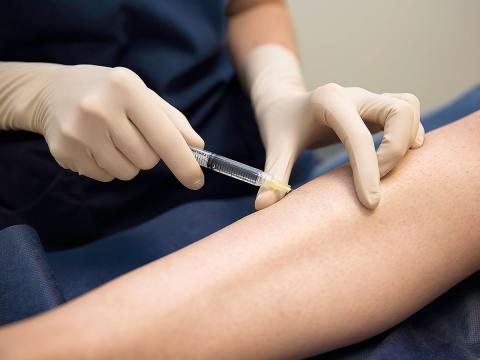
SUMMARY:
- A comprehensive Venous Insufficiency Duplex Ultrsound.
- Treatment with 99.7% success at 6 years.
- Treatment that requires no sedation and no fasting and no time off work.
- Treatment that avoids invasive phlebectomy in 95% of patients.
- Safe delivery of ultrasound guided sclerotherapy using the GLO Technique.
- Extremely low complication rate of only 1 minor calf DVT in over 1300 laser procedure and 1 leg ulcer post sclerotherapy in over 2000 procedures.
A comprehensive venous insufficiency duplex ultrasound
If the ultrasound is not thorough and any venous insufficiency is missed, it is not treated. Please see below, one of our patients, scanned in a non-vascular lab in the red and then in Vascular Imaging Centre in yellow (almost twice as much disease identified at Vascular Imaging Centre).
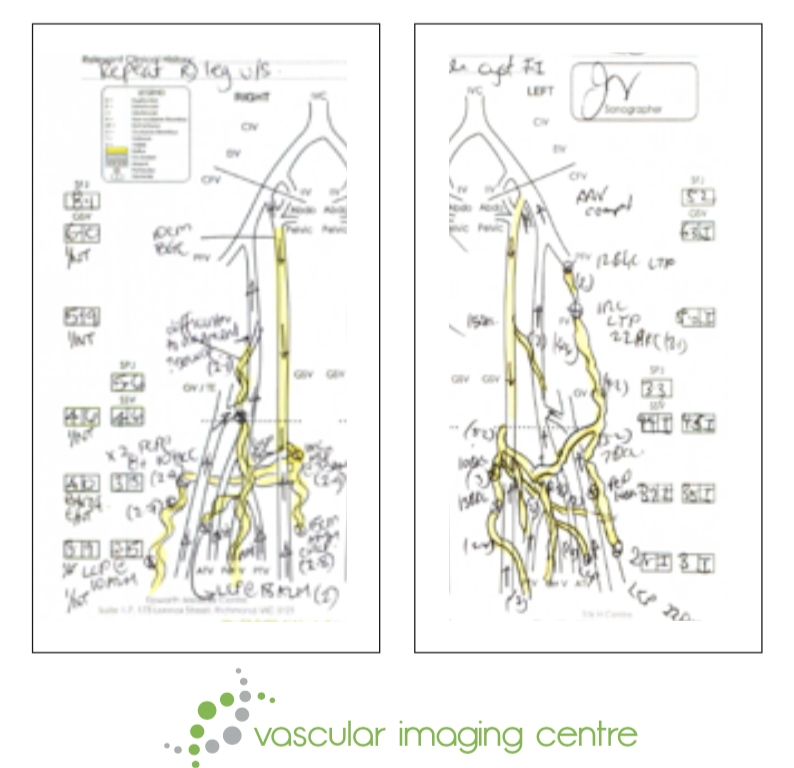
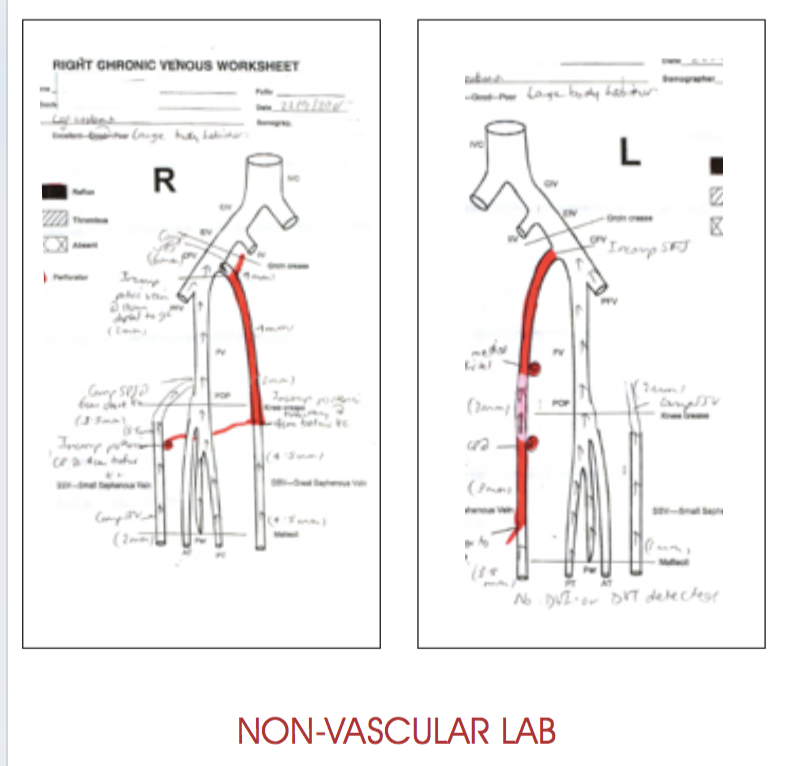
Provision of a treatment with 99.7% success rate at 6 years
Claire has now performed over 1300 endovenous laser procedures for treatment of the great saphenous vein and small saphenous vein. We have only seen 2 veins reopen. Not all patients return for their annual review preventing long term follow up. We encourage all patients to present annually not only to make sure all treatment to date was a success but also to detect any new disease. Published data to date consistently shows very high success rates for the 1470nm laser radial fiber 95-100%. Far higher than for older low wavelength lasers and for bare tip fibers which show success rates closer to 80%.
Provision of a treatment that requires no fasting, no sedation and no time off work
The 1470nm laser and radial fiber is the gentlest endothermal treatment available today. This means patients do not need to fast, do not need sedation and definitely do not need general anaesthetic. It also means the average pain score during treatment is 1.59/10 (Visual Analogue Scale) and <1/10 post treatment (at The Vein Centre). The average time off work is the day of treatment only. This is significantly less than for stripping (averaging 21 days Vuylsteke M et al Phlebology 2006) and for low wavelength laser and bare tip fibers (averaging 4-8 days Carradice et al Br J Surg.2011).
A treatment that avoids invasive phlebectomy in 95% of patients with varicosities
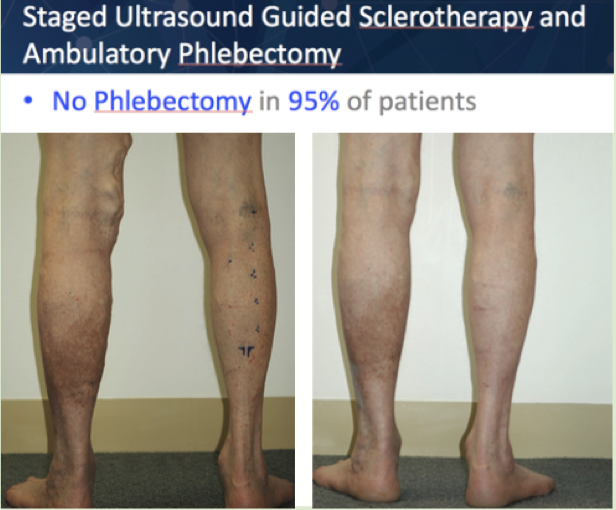
Safe delivery of Ultrasound Guided Sclerotherapy using the GLO Technique
Claire designed the Gian-Luigi Occlusion technique to prevent embolization of sclerosant. Prior to Ultrasound Guided Sclerotherapy the patient is carefully mapped under ultrasound identifying all veins to be injected, all veins to be protected, and important drainage points that need to be digitally occluded during treatment to prevent the embolization of sclerosant.
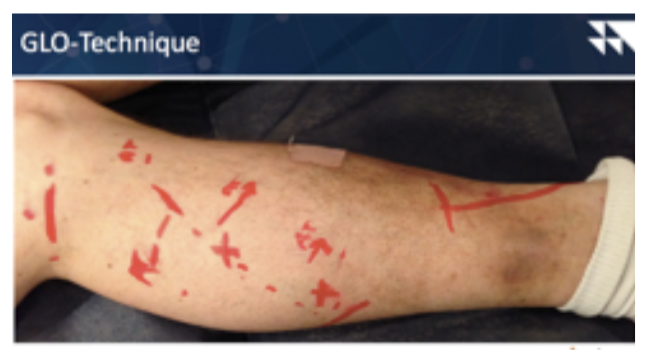
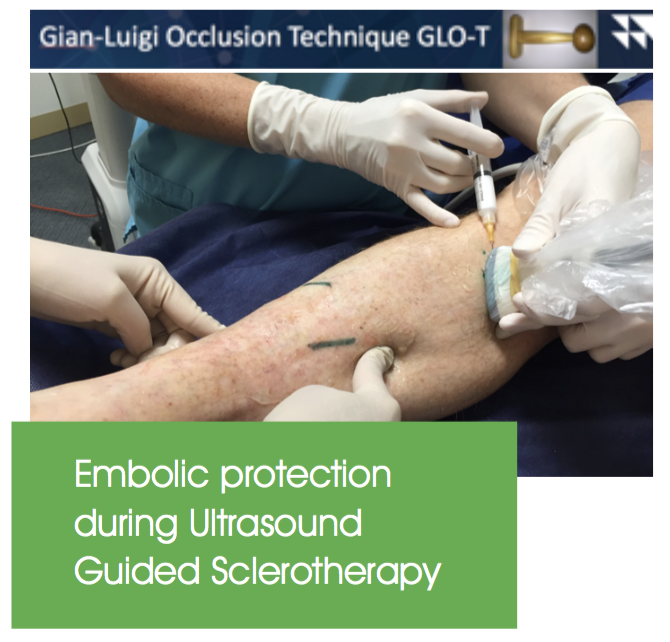
Complete treatment that is very low risk
- Ankle to junction trunk vein (great and small saphenous vein) treatment. Not just partial length treatment.
- Low risk of nerve injury especially in high risk areas eg. below knee and at the ankle.
This is possible with the high wavelength laser and radial fiber. The radial fiber provides 1/9 of the fluence (energy per unit area) of a bare tip fiber, so is far safer. This allows treatment of the trunk vein in areas at risk of nerve injury. We also know that failure to treat venous insufficiency in the below knee GSV fails to correct venous haemodynamics and leads to unacceptable recurrence rates (EJVES A. Bradbury 2004). We also know that stripping below knee has a nerve injury rate of 50% (EJVES A. Bradbury 2004) and that stripping is now third line treatment. Endothermal ablation is now recommended as first line treatment in 3 international guidelines (UK, USA and European). Unfortunately, many doctors use the cheaper end emitting (bare tip fiber) as it is reusable (up to 12 patients). This delivers 9 times the energy and most of the energy is absorbed by blood before it reaches the vessel wall, necessitating the use of very high wattage and much higher risks of nerve injury.
Provison of services in a timely and efficient manner
We endeavour to ensure there are no long wait periods for patients to see Claire and to complete their treatment regime. Because treatments are staged, patients often have to complete treatment over a 2 week period. We are currently revising this program to try to enable patients to complete all stages of treatment within a 1 week time frame. We rely heavily on patients replying to their SMS appointment reminders so we avoid last minute re-scheduling. All patient treatments involve not only Claire's time but also that of 2 Theatre Nurses. Our Sonographers are all Specialist Sonographers and command a Specialist level wage. Last minute cancellations, therefore, impair our ability to provide the most cost effective service.



